This article describes humidity measurement devices. Humidity is the amount of water vapor contained in the air.
Absolute Humidity: The measure of the actual amount of water vapor in the air, irrespective of the temperature of the air is called absolute humidity. Humidity is measured as grams of water vapor per cubic meter volume of air. When the amount of water vapor in the air is higher, the absolute humidity is also higher.
Relative Humidity: The measure of the amount of water vapor that the air is holding as compared to the amount it can hold at a specific temperature is called relative humidity. The relative humidity is expressed in percentage. Relative humidity depends on temperature.
Specific Humidity: The weight of water vapor contained in a unit amount of air is referred to as specific humidity. Specific humidity is expressed in terms of grams of water vapor per kilogram of air.
Dew Point: The temperature at which the air gets saturated with water and condensation begins is called the dew point. The higher the dew point, the greater the moisture content.
Why is it important to measure Humidity?
Humidity means the presence of water in the air. The water vapor present in the air can affect personal comfort. Not just this, it also has a severe impact on various manufacturing processes in industries. For example, in a semiconductor industry, the moisture or humidity level must be regulated properly so as to ensure perfect wafer processing. Humidity control is also crucial for incubators, respiratory equipment, sterilizers, and biological products. Humidity level also can impact chemical, biological, and physical processes.
Measurement of humidity
The followings are the humidity measurement devices used to measure the humidity. The different methods of humidity measurement are:
1. Psychometric Method
The psychometric method is the oldest method of measuring humidity. The psychometric method is also known as the wet and dry bulb method. The psychometric sensor would not sense humidity directly; instead, it senses the temperature and indirectly finds humidity. The sensing elements which may be used are thermometers, RTDs, or thermistors.
The psychometric method uses two sensing elements; the first one is the “dry bulb”, which measures the ambient temperature. The second one is the “wet bulb”, which is enclosed in a wick saturated with distilled water. Air is forced across the wet bulb which creates evaporation. Due to this, the temperature is cooled below the ambient temperature.
The amount of cooling will depend on the vapor pressure of the air. With the help of wet and dry bulb temperatures, the relative humidity can be looked up in the psychometric chart. The psychometric chart and dew point equations can be stored in a microprocessor. Then, it would make it a direct sensing method for relative humidity and dew point.
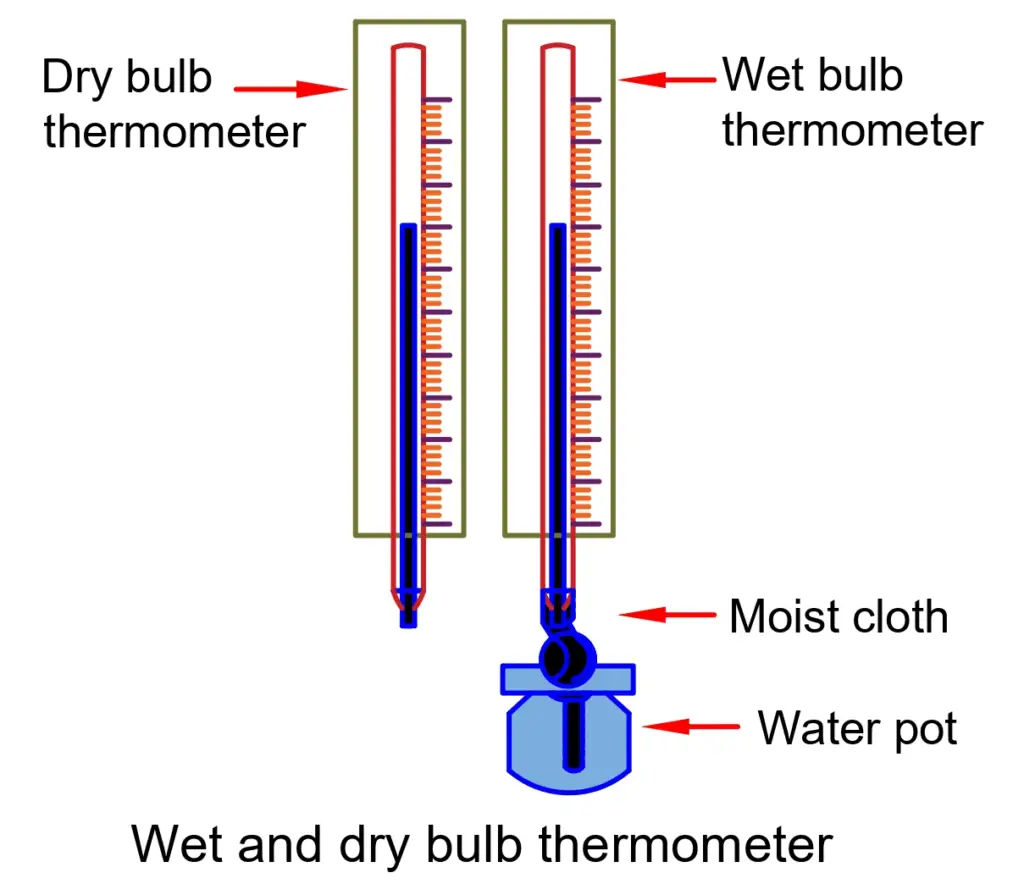
2. Dew Point method
In the dew point type humidity measurement there are two types of dew point sensors. They are cooled condensation surface type and solution of saturated lithium chloride.
The solution of saturated lithium chloride would not directly sense relative humidity. It requires saturating a wick with resistive electrodes in the solution and an excitation current flowing through the wick will create joule heating. Due to this heating, some is the solution will evaporate, reducing the resistance and slowing the heating. Gradually, equilibrium will be reached and the temperature of the solution can be related to the dew point.
In the cooled condensation surface type, the temperature at which the condensation begins is accurately measured. The most commonly used device to detect condensation is a mirror. The system is set up in a way that an LED (Light Emitting Diode) reflects the mirror at an angle of 45 degrees. The photo-transistor will detect the reflected light. The temperature of the mirror is electrically controlled. Now, the mirror’s surface is cooled below the ambient temperature until condensation forms.
Due to condensation on the mirror’s surface, the LED light is scattered. Because of this, there is a sudden drop in the output of the phototransistor. At this point, the surface temperature of the mirror is read using a temperature sensor, for example, an RTD or thermistor. This temperature that is read is the dew point.
When a feedback loop is created, the cooling or heating of the mirror will continuously track the dew point. There are many designs of condensation surfaces that are used. The most stable and accurate method for measuring relative humidity is the chilled mirror method.
In this method, it is essential to keep the mirror clean. Also, the temperature sensor and mirror must be of high quality. It has the best humidity range (0-100%RH). It can be used for various gases at many pressures. They are bulky and very expensive.
3. Hygrometric method
The hygrometer is a humidity measurement device designed to measure the relative humidity in an open or closed area. It indirectly measures humidity by sensing the changes in the physical or electrical properties of materials caused because of the moisture content within them. Thus the output is directly indicative of humidity.
3a. Laminate Hygrometer
The laminate hygrometer is made by attaching thin strips of wood to thin metal strips, hence forming a laminate. The laminate hygrometer is formed in a helix shape. When the humidity changes, there is a change in the helix. This is because there is a change in the length of wood due to humidity. The end of the helix is attached with a pointer and hence gives defection. The scale of the pointer is graduated in percent humidity.
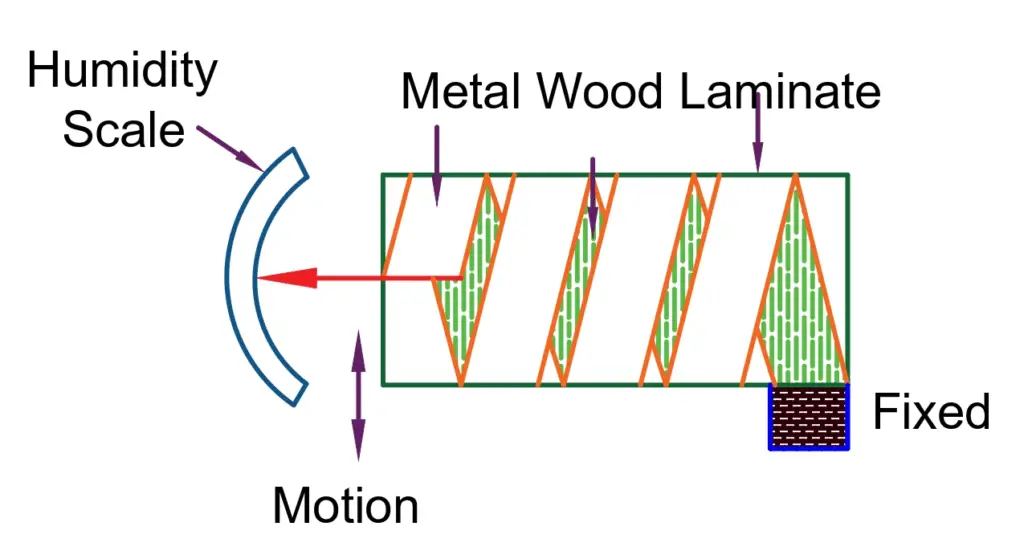
3b. Hair Hygrometer
A hair hygrometer is the simplest and oldest type of hygrometer. In this, human hair is used. Human hair has a tendency to lengthen by 3% when the humidity changes from 0 to 100%. This change in length can be used to control a pointer for indication or a transducer like an LVDT (Linear Variable Differential Transducer) for electrical output. It has an accuracy of ± 5% for humidity ranging from 20 to 90% over the temperature range of 5 to 40°C.
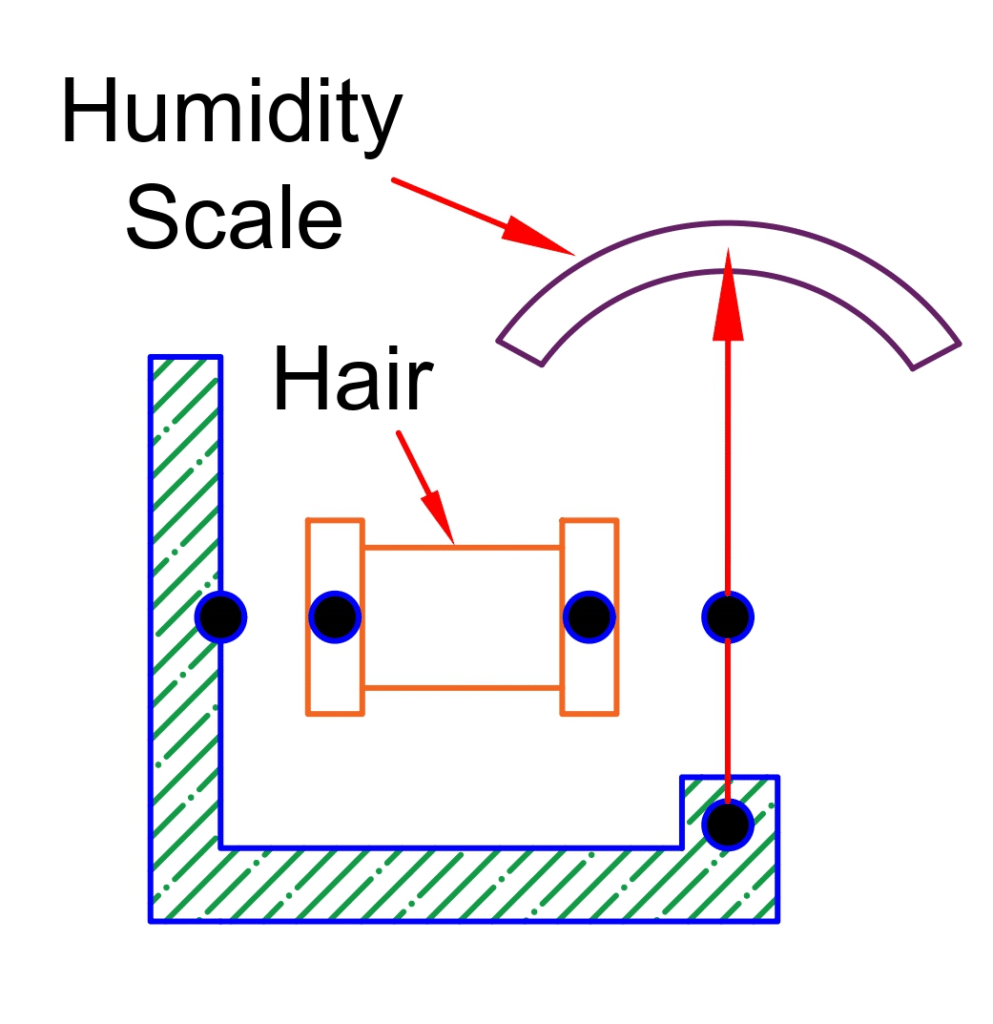
3c. Resistive Hygrometer
In the resistive hygrometers, there are two electrodes with interdigitated fingers on an insulating substrate. The electrodes have a coating of a hygroscopic material (material that adsorbs water, for example, lithium chloride). Due to this coating, a conductive path is provided between the electrodes. The coefficient of resistance of the path is inversely proportional to humidity.
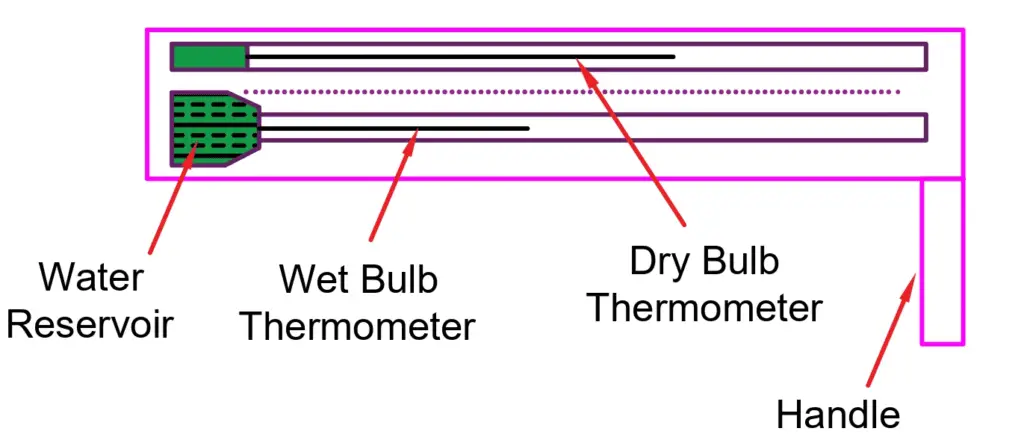
The electrodes may also be coated with a bulk polymer film which would release ions proportional to relative humidity. Variations in these devices are the electrolytic and resistance-capacitance hygrometers.
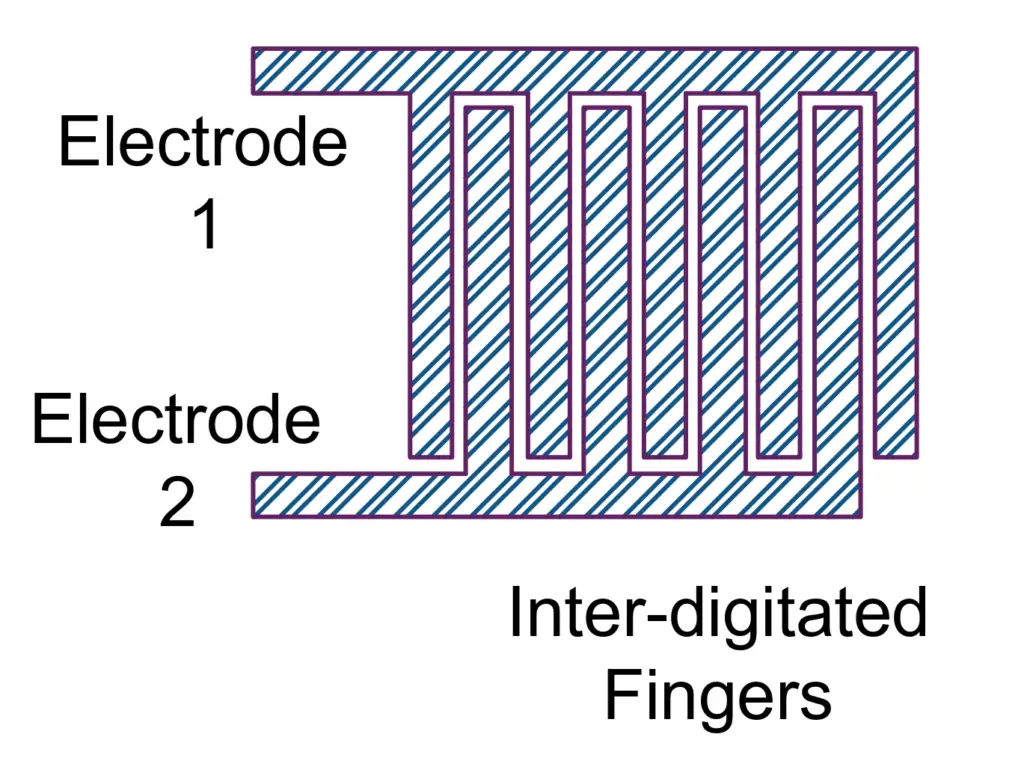
3d. Capacitive Hygrometer
Certain thin polymer films have a property that the constant dielectric changes with a change in humidity. This principle forms the base of capacitive hygrometers. The capacitance between the two plates made by using the polymer as a dielectric will be directly proportional to humidity. They have good longevity. The working range of capacitive hygrometers is 0 to 100°C. They have a fast response time. They can also be temperature compensated so as to give an accuracy of ±0.5% over the full humidity range.
3e. Piezoelectric Hygrometer
The piezoelectric hygrometers use two piezoelectric crystal oscillators. From these one is used as a reference. It is enclosed in a dry atmosphere. The second oscillator is exposed to humidity which is to be measured. Due to moisture, there is an increase in the crystal mass, which will decrease its resonant frequency. When the frequencies of both oscillators are compared, humidity can be calculated. It can measure gases with moisture content from 1 to 25,000 ppm.
This is all about humidity measurement devices.